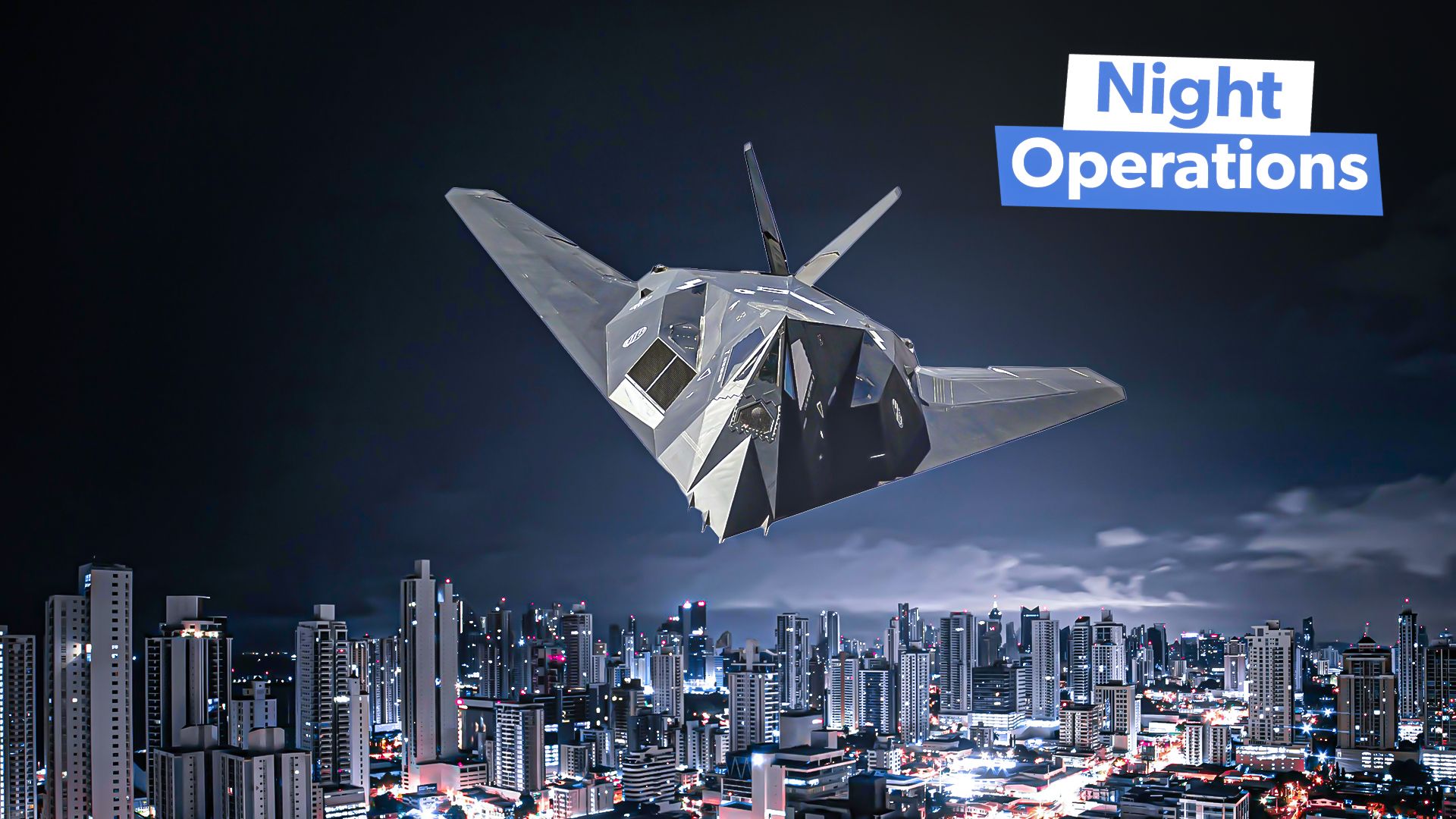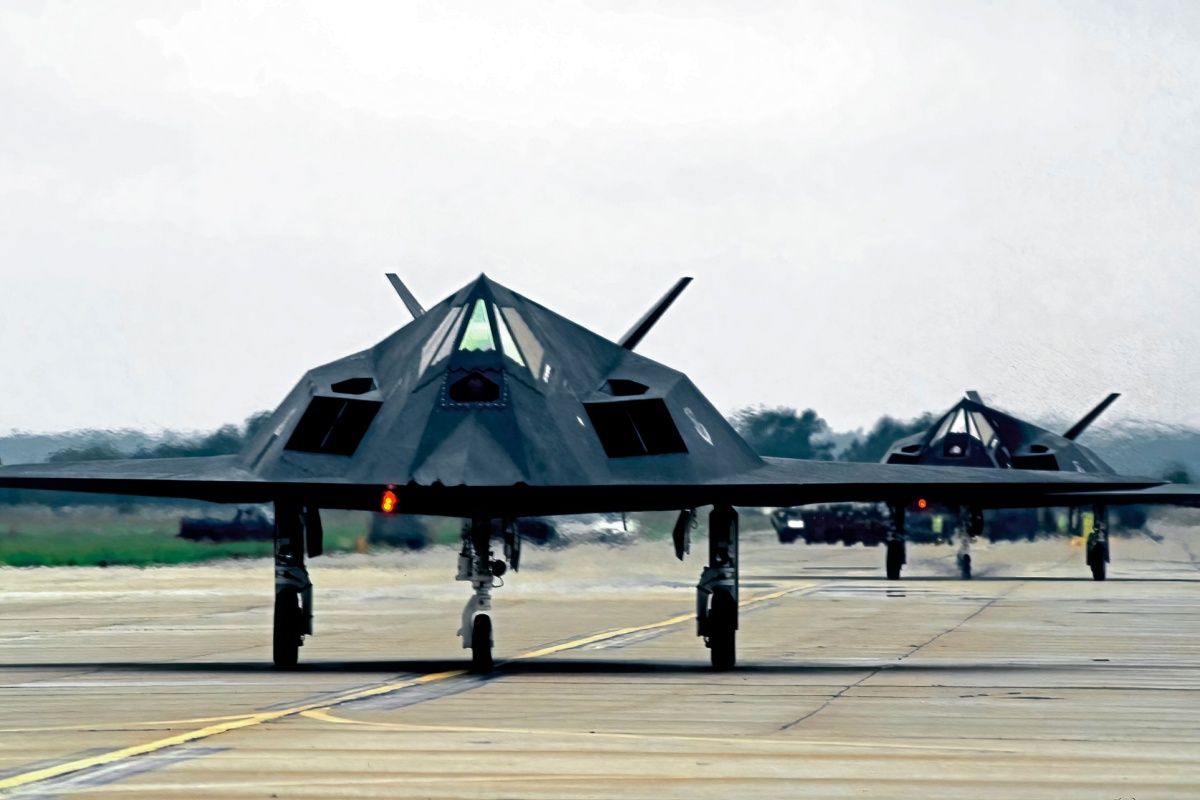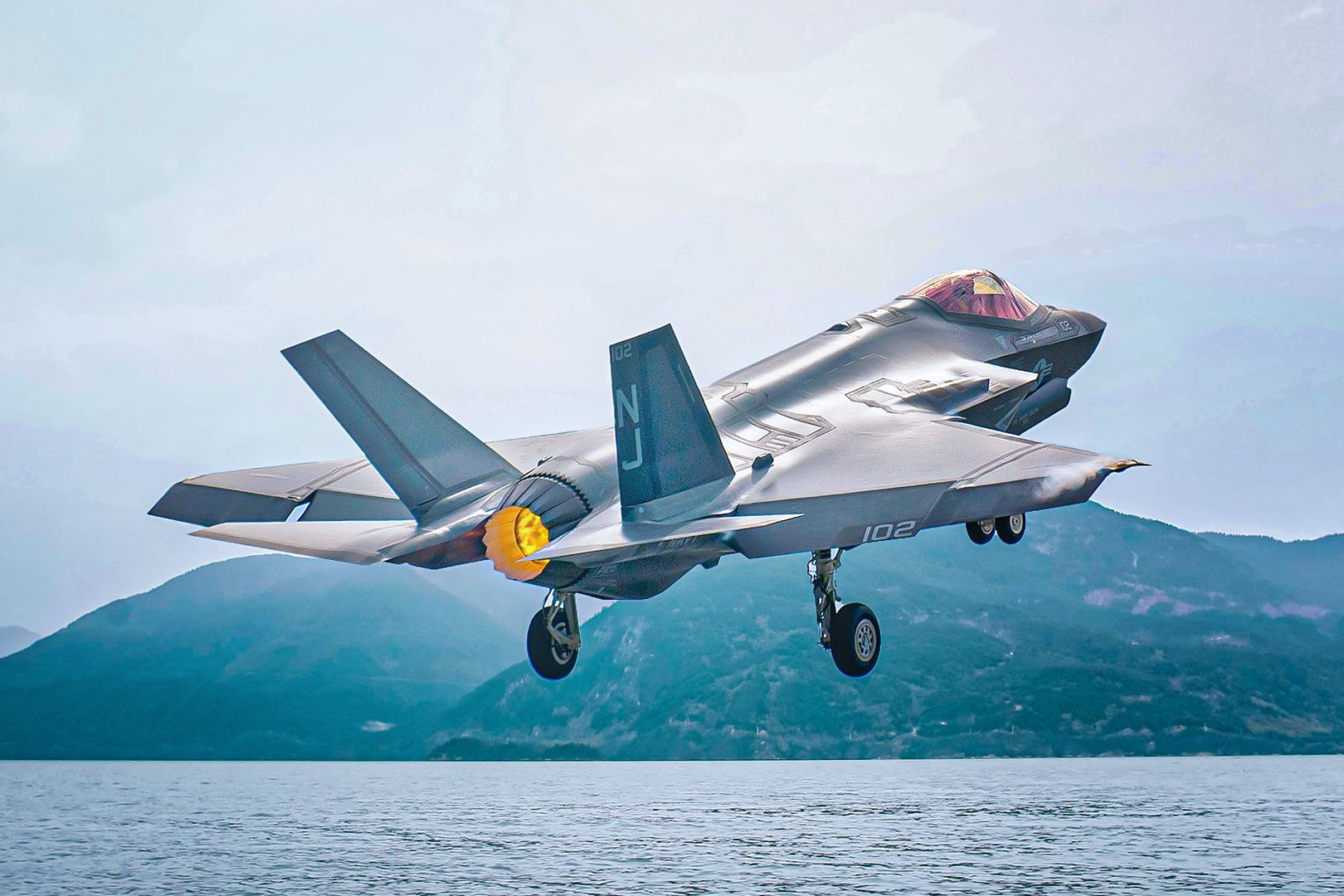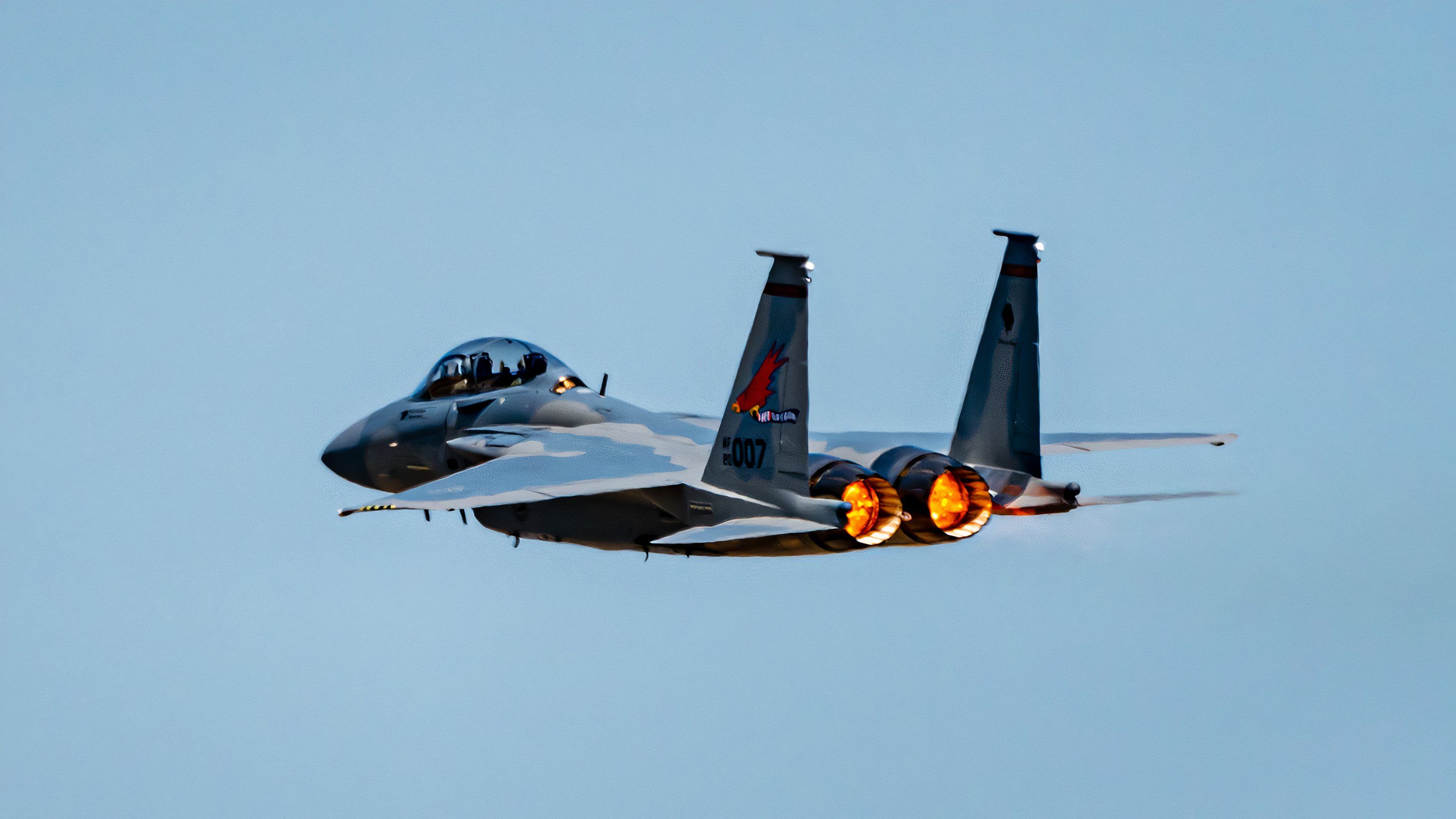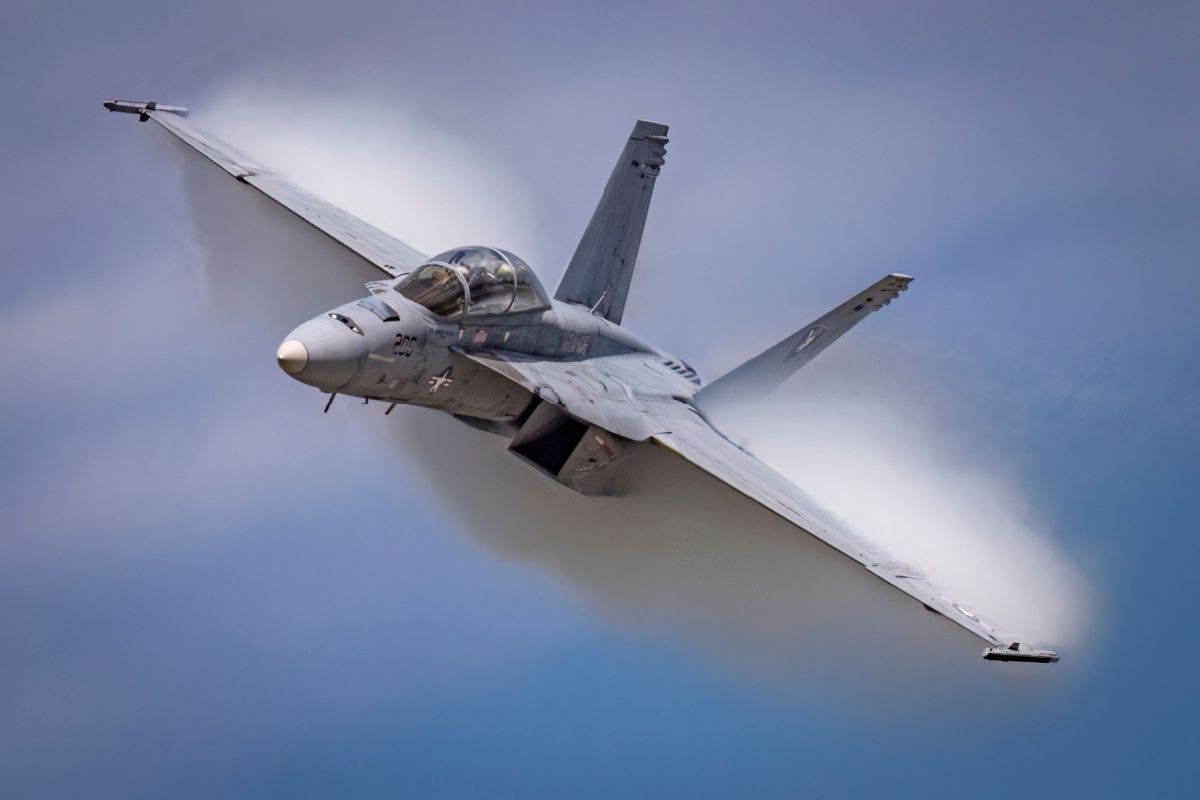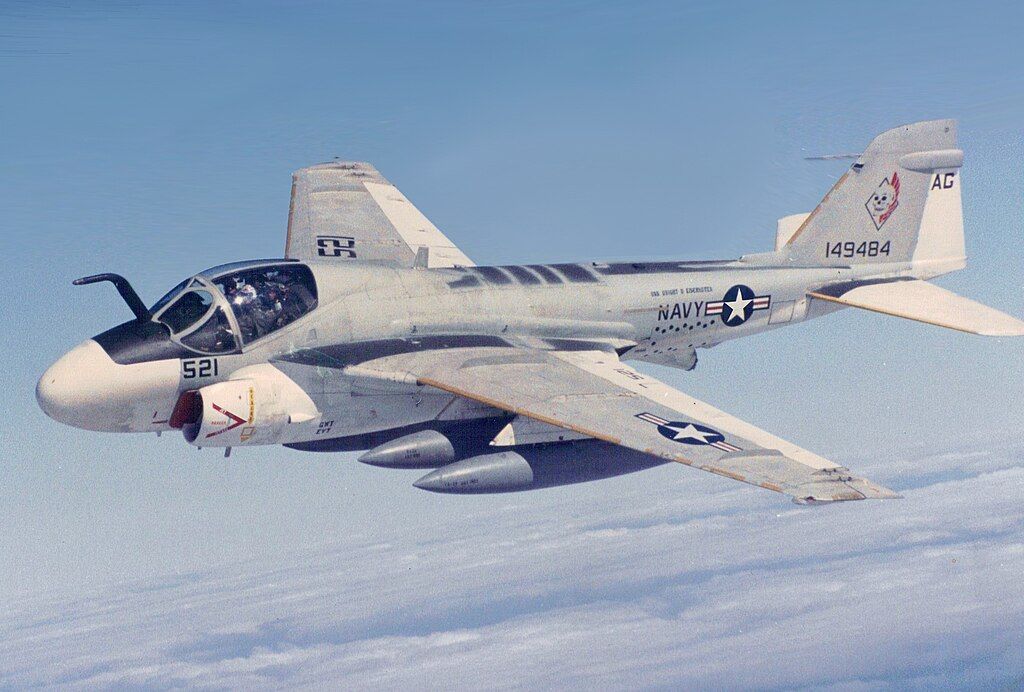Summary
- F-117 Nighthawk – First stealth night aircraft for combat with advanced navigation & thermal systems.
- F-35 Lightning II – Equipped with advanced sensors for enhanced pilot visibility during SEAD missions.
- F/A-18 Hornet – Carrier-capable supersonic aircraft using JHMCS for superior target detection.
Modern fighter aircraft are designed for air superiority during day and night missions and in all weather conditions. Advanced avionics and cockpit systems enable better control and situational awareness of pilots during night missions. This article explores some of the most advanced fighter aircraft designed for night missions.
1
F-117 Nighthawk
First operational aircraft designed for stealth night missions
- First flight: June 1981
- Number built: 64 (5 YF-117As, 59 F-117As)
- Integrated digital navigation and attack systems
- Thermal imaging infrared system
- Laser rangefinder and designator
- Fly-by-wire (FBW) flight system
The Lockheed F-117 Nighthawk was a single-seat subsonic aircraft developed by Lockheed’s Skunk Works division. Designed for the United States Air Force (USAF) to counter sophisticated Soviet surface-to-air missiles, it was the first operational aircraft featuring stealth technology.
Photo: mark reinstein l Shutterstock
The F-117 was equipped with integrated digital navigation and attack systems, enabling effective combat power during day and night missions. Targeting is achieved through a thermal imaging infrared system that offers precise identification of the enemy target. The laser designator picks up the enemy aircraft signature even during low-visibility conditions, including at night.
2
F-35 Lightning II
Equipped with advanced night vision systems
- First flight: December 2006
- Number built: 1,000+
- Visor-projected night vision
- Bi-ocular display system with full day and night vision
- AN/AAQ-40 Electro-Optical Targeting System
- AN/AAQ-37 Electro-Optical Distributed Aperture System
The Lockheed Martin F-35 Lightning II is a family of fifth-generation single-engine fighters designed for day and night operations. The low-observable stealth fighter is equipped with a Generation III Helmet Mounted Display System for enhanced pilot visibility and combat readiness.
Photo: USAF
With the help of advanced sensors and mission systems, the F-35 can achieve suppression of enemy air defense (SEAD) missions. Collins Aerospace, the producer of the helmet technology, states,
“The F-35 Gen III Helmet Mounted Display System’s next generation interface provides pilots with intuitive access to vast quantities of flight, tactical, and sensor information for advanced situational awareness, precision and safety.”
3
F-15E Strike Eagle
Designed for all-weather, day, or night missions
- First flight: December 1986
- Number built: 435
- Joint Helmet Mounted Cueing System (JHMCS)
- Tactical electronic warfare system (TEWS)
- Radar warning equipment
- ALQ-131 ECM pod
- MIDS Fighter Data Link Terminal
- AN/ALQ-250 EPAWSS digital electronic warfare suite
The all-weather multi-role strike fighter was designed for high-speed interdiction during day and night missions. The F-15E Strike Eagle is generally deployed on deep-strike missions, including those providing close air support (CAS) to friendly troops on the ground.
Photo: Joe Kunzler | Simple Flying
The aircraft is equipped with a tactical electronic warfare system (TEWS) that integrates all countermeasures on the aircraft using the installed radar and sensor systems. The complete system provides a comprehensive defense against enemy targets while offering enhanced situational awareness and safety.
4
F/A-18 Hornet
Used extensively for nighttime carrier operations
- First flight: November 1978
- Number built: 1,480
- Joint Helmet Mounted Cueing System (JHMCS)
- NVCD QuadEye™
- Integrated line-of-sight cueing technology
- Ejection safe
The McDonell Douglas F/A-18 Hornet is a twin-engine carrier-capable supersonic aircraft designed for multi-role operations day and night. The aircraft employs JHMCS for air superiority missions, where mission-specific integrated systems enhance enemy target detection in any combat scenario.
Photo: BlueBarronPhoto l Shutterstock
According to Collins Aerospace,
“JHMCS incorporates a highly accurate magnetic tracking system, providing the pilot full situational awareness throughout the canopy field-of-regard. JHMCS is in full-rate production and is operational on the F-15, F-16 and F/A-18.”
5
Grumman A-6 Intruder
All-weather, night attack aircraft used during Vietnam and Desert Storm
- First flight: April 1960
- Number built: 693
- Integrated avionics system
- Vertical Display Indicator (VDI)
- Basic Automated Checkout Equipment (BACE)
The Grumman A-6 Intruder is an all-weather twin-engine attack aircraft designed and developed by Grumman Aerospace in the late 1950s. Formerly operated by the United States Marine Corps (USMC) and the US Navy (USN), the A-6 has a unique side-by-side pilot seating configuration. The aircraft was equipped with a Vertical Display Indicator (VDI), offering a synthetic representation of the environment, including steering cues for pilots.
The VDI enabled head-down navigation and attack readiness for pilots during day and night missions and in all weather conditions. The first-of-its-kind Line BACE system was used to identify malfunctions and perform analysis and maintenance. The systems reduce maintenance hours and minimize the operating cost of the aircraft.

